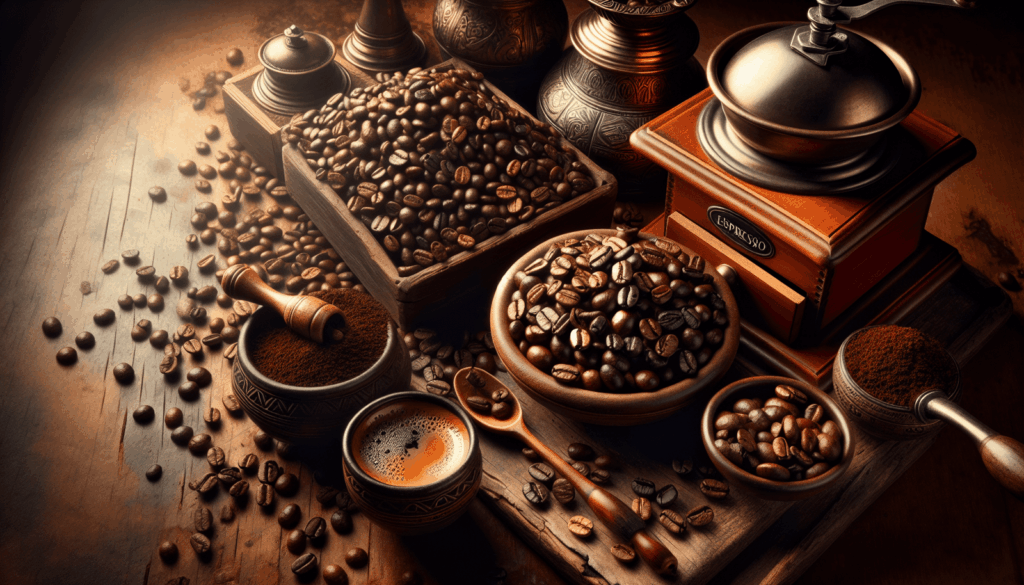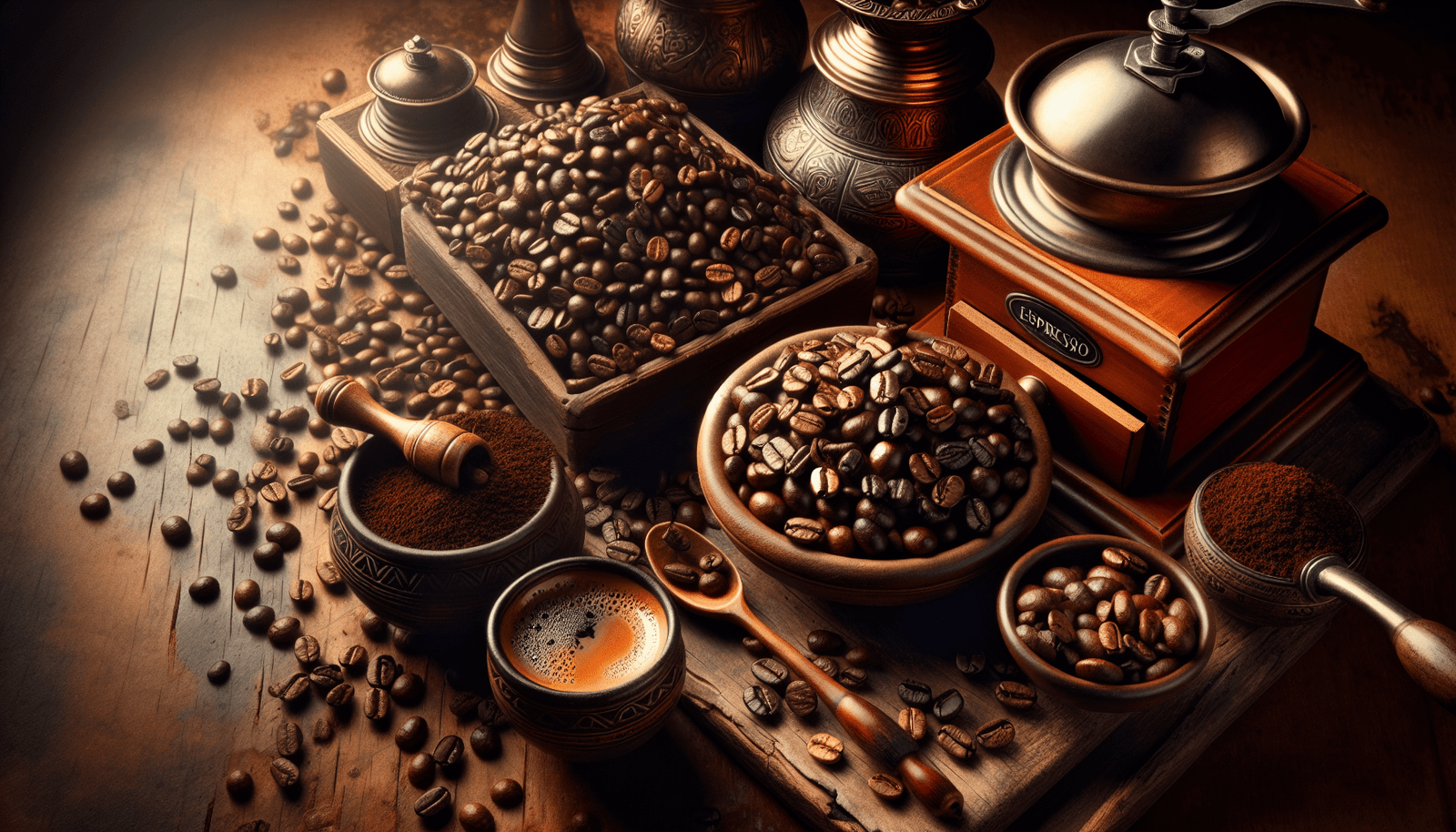
Can You Use Any Beans for Espresso? Unpacking the Bean Dilemma
The quest for the perfect espresso often feels like navigating a complex maze. From understanding grind size to mastering the art of tamping, there’s a steep learning curve. But perhaps the most fundamental question facing aspiring baristas and seasoned coffee aficionados alike is: can you use any beans for espresso? The answer, as with many things in the world of coffee, is nuanced. This article will delve into the intricacies of bean selection, exploring the characteristics that make certain beans ideal for espresso, while also addressing the viability of using a wider variety of beans.
The allure of espresso lies in its concentrated flavor, rich crema, and the intense experience it offers. Achieving this requires a delicate balance of factors, and the type of bean used is paramount. While theoretically, you can use any beans for espresso, the resulting quality and experience will vary dramatically. This guide aims to unravel the complexities of bean selection, empowering you to make informed choices and brew exceptional espresso.
The Essentials of Espresso: What Makes a Bean Suitable?
Before we explore the variety of beans, it’s crucial to understand the characteristics that contribute to a successful espresso shot. Several factors influence the final product, including bean origin, processing method, roast level, and of course, the freshness of the beans.
Origin and Varietal
The origin of the bean significantly impacts the flavor profile. Beans from different regions possess distinct characteristics influenced by climate, soil, and altitude. For example, beans from Ethiopia often exhibit bright, fruity notes, while those from Sumatra might offer a more earthy and full-bodied experience. The varietal of the coffee bean also plays a crucial role. Arabica beans, known for their complex flavors and lower acidity, are generally preferred for espresso. Robusta beans, while possessing a higher caffeine content and a more robust flavor, are often used in blends to add body and crema.
Processing Methods
The processing method used to prepare the coffee cherries after harvesting also influences the final flavor. Common methods include washed, natural (dry-processed), and honey-processed. Washed coffees typically offer a cleaner, brighter cup, while natural processed coffees tend to be sweeter and more complex. Honey-processed coffees fall somewhere in between. Understanding these processes can help you predict the potential flavor profiles of different beans.
Roast Level: A Critical Factor
The roast level is perhaps the most critical factor when considering can you use any beans for espresso. The roasting process develops the flavors of the bean, and the roast level dictates the resulting characteristics. Generally, medium to dark roasts are preferred for espresso. These roasts have undergone sufficient development to produce the rich, complex flavors that are characteristic of espresso. Darker roasts often have a bolder, more intense flavor with notes of chocolate, caramel, and a hint of bitterness. Lighter roasts, on the other hand, may be too acidic or lack the body and crema needed for a satisfying espresso experience.
The Ideal Candidates: Beans Best Suited for Espresso
So, if you’re wondering, “can you use any beans for espresso?” the answer leans towards specific types. Certain beans consistently perform better than others in the espresso machine. These beans typically possess characteristics that enhance the extraction process and contribute to a balanced and flavorful shot.
Arabica Beans: The Espresso Standard
As mentioned earlier, Arabica beans are the workhorses of the espresso world. Their complex flavor profiles, lower acidity, and generally higher quality make them ideal. Within the Arabica family, specific varietals often excel. For example:
- Ethiopian Yirgacheffe: Known for its floral aromas, bright acidity, and delicate fruit notes.
- Sumatran Mandheling: Offers a full body, earthy notes, and low acidity.
- Brazilian Santos: Provides a balanced flavor profile with a nutty sweetness, making it a versatile choice.
Blends: The Art of Combination
Many espresso enthusiasts prefer using blends. A well-crafted blend combines beans from different origins and varietals to create a complex and balanced flavor profile. Blends often incorporate a mix of Arabica beans for flavor complexity and body, and a small percentage of Robusta beans to enhance crema and caffeine content. The art of blending lies in finding the perfect balance between these characteristics.
The Importance of Freshness
Regardless of the bean type, freshness is paramount. Coffee beans begin to lose their flavor and aroma shortly after roasting. Ideally, beans should be used within a few weeks of the roast date. Grinding the beans just before brewing is also crucial to preserve freshness and maximize flavor extraction. This is particularly important when considering can you use any beans for espresso because stale beans will produce a flat, uninteresting shot.
Can You Use Any Beans for Espresso? Exploring the Limits
While medium to dark roasted Arabica beans are the gold standard, the question remains: can you use any beans for espresso? The short answer is yes, but with caveats. Experimentation is encouraged, but expect varying results.
Lighter Roasts: A Challenging Proposition
Lighter roasts, with their higher acidity and underdeveloped flavors, can be challenging to extract properly for espresso. They often produce sour, under-extracted shots. However, some baristas have experimented with lighter roasts, using specific techniques like longer pre-infusion times or adjusting grind size to achieve a balanced extraction. These methods require advanced skills and careful attention to detail.
Robusta Beans: A Double-Edged Sword
Robusta beans, with their higher caffeine content and more robust flavor, can be used for espresso. They can add a creamy texture and a fuller body to the shot. However, they can also be bitter and harsh if not properly roasted and extracted. Using a small percentage of Robusta in a blend can be beneficial, but using pure Robusta for espresso can be an acquired taste.
The Experimenter’s Guide: Trying Different Beans
If you’re curious about experimenting with different beans, here’s a simple guide:
- Start with Medium Roasts: Begin with medium-roasted Arabica beans to establish a baseline and understand the extraction process.
- Adjust Grind Size: Fine-tune your grind size to achieve the optimal extraction time (around 25-30 seconds for a double shot).
- Monitor the Crema: Observe the crema produced. A thick, rich crema is a sign of a good extraction.
- Taste and Adjust: Taste the espresso and adjust your grind size or other parameters accordingly. If the shot is sour, try a finer grind. If it’s bitter, try a coarser grind.
- Keep Records: Keep track of your experiments, including bean type, roast level, grind size, and extraction time. This will help you refine your technique.
Troubleshooting Espresso Problems
Even with the right beans, problems can arise. Understanding common issues is crucial for brewing consistently excellent espresso. When considering can you use any beans for espresso and encountering difficulties, troubleshooting is essential.
Under-Extraction
Under-extraction occurs when the water doesn’t fully extract the flavors from the coffee grounds. The result is a sour, acidic shot. Common causes include a grind that is too coarse, insufficient tamping pressure, or water temperature that is too low. Fine-tuning the grind and ensuring proper tamping are crucial.
Over-Extraction
Over-extraction happens when the water extracts too much from the coffee grounds, resulting in a bitter, burnt-tasting shot. Common causes include a grind that is too fine, excessive tamping pressure, or a water temperature that is too high. Adjusting the grind and tamping technique can resolve this issue.
Channeling
Channeling occurs when water finds a path of least resistance through the coffee grounds, resulting in uneven extraction. This often leads to a weak and inconsistent shot. Ensuring even distribution of the grounds and proper tamping can prevent channeling.
The Bottom Line: Can You Use Any Beans for Espresso?
So, can you use any beans for espresso? The answer is complex, yet ultimately achievable. While the ideal espresso experience often relies on medium to dark roasted Arabica beans, the adventurous can experiment with different beans and roast levels. The key is to understand the characteristics of each bean, adjust your brewing parameters accordingly, and embrace the learning process. Remember, the journey to perfect espresso is a continuous exploration.
The best answer to “can you use any beans for espresso” depends on your personal preferences and willingness to experiment. Ultimately, the perfect espresso is the one you enjoy the most. Don’t be afraid to try different beans, learn from your mistakes, and refine your technique. The world of coffee is vast and exciting, and the pursuit of the perfect espresso is a rewarding endeavor. Understanding the nuances of bean selection and extraction is key, and the question of “can you use any beans for espresso” should be a starting point, not a limitation.
Ultimately, the best coffee is the coffee you enjoy. Now that we’ve answered the question, “can you use any beans for espresso?” go forth and brew!
[See also: Related Article Titles]


